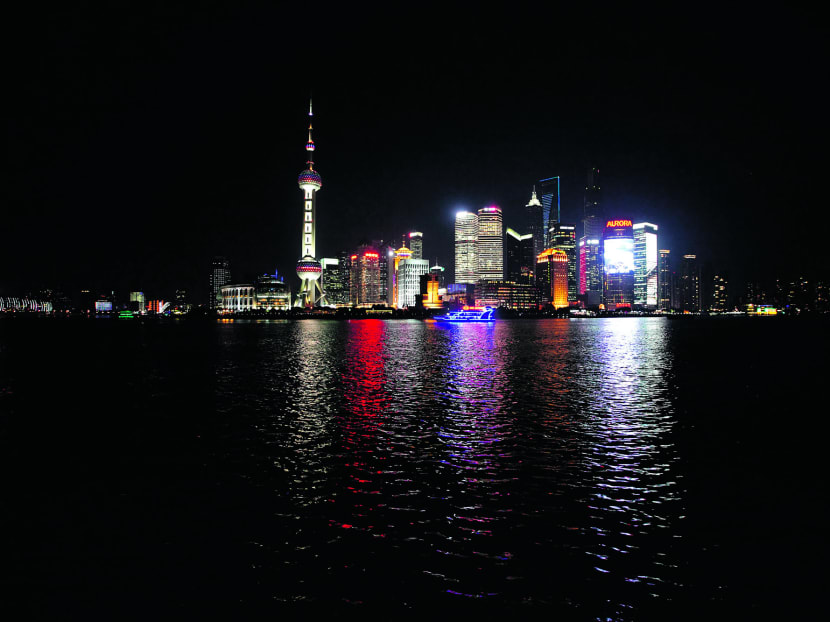Signs that China is stabilising
BEIJING — China’s factory output grew in July at its fastest pace since the start of the year, adding to a run of data — including Thursday’s surprisingly strong trade figures — which suggest the world’s second-largest economy may be stabilising after more than two years of slumping growth.

Photo: Bloomberg
BEIJING — China’s factory output grew in July at its fastest pace since the start of the year, adding to a run of data — including Thursday’s surprisingly strong trade figures — which suggest the world’s second-largest economy may be stabilising after more than two years of slumping growth.
Factory output rose 9.7 per cent in July from a year earlier, the fastest growth since output grew 9.9 per cent over January and February, National Bureau of Statistics data showed.
“While we would not say that China is out of the woods yet, the recent rise in sentiment has been noticeable, and talks that economic growth will fall below 7 per cent in 2013 now seems rather far-fetched,” said Mr Chester Liaw, an economist at Forecast in Singapore.
Retail sales advanced 13.2 per cent, while fixed-asset investment excluding rural households grew 20.1 per cent in the first seven months of the year. A slowing decline in wholesale prices also suggests weak demand might be strengthening.
A steadying economy would be a relief to China’s leaders, who worry a further slowdown could derail their efforts to rebalance the economy away from its credit- and investment-driven growth model in favour of one driven by consumption.
Indeed, China’s broadest measure of new credit fell to a 21-month low, as Premier Li Keqiang extended a campaign to curb a record expansion of lending — driven by shadow banking — that has added risks to the nation’s financial system.
Aggregate financing was 808.8 billion yuan (S$166.1 billion), the People’s Bank of China said. New yuan loans exceeded forecasts and accounted for about 87 per cent of the total, the most since September 2011. M2 money supply growth unexpectedly accelerated to 14.5 per cent.
While reduced credit may make it tougher for Mr Li to achieve this year’s 7.5 per cent growth target — which would be China’s slowest growth in 23 years — it would ease dangers of a financial crisis. China’s lending surge in the past five years is of a magnitude that tipped Asian nations into crisis in the late 1990s, according to Goldman Sachs Group.
“The tightness in liquidity is likely to continue as the current policy takes effect, but it won’t get tighter,” said Mr Zhou Hao, an economist at ANZ in Shanghai.
CAUTION ADVISED IN INTERPRETING DATA
China’s CSI300 index reversed early losses after the data to end up 0.4 per cent and post its biggest weekly gain in a month. European and Asian shares also edged higher and oil prices rebounded on the latest indicators of stabilisation in China’s economy.
Separate data showed consumer inflation ran at a benign annual rate of 2.7 per cent last month, close to forecasts.
“The muted inflation reading will provide necessary room for implementing a mini-fiscal stimulus,” said Mr Lu Ting, an economist at Bank of America Merrill Lynch.
Thursday’s trade data showed exports rose 5.1 per cent last month from a year ago, a smart bounce from their first fall in 17 months in June, and imports jumped 10.9 per cent.
Yet, analysts warned against concluding that the data over the past two days was driven by an actual rise in final demand. They said imports were partly inflated by delayed shipments and unprocessed deals from June, firms rebuilding stocks after a lull and new companies entering the business.
Mr Huang Guohua, a senior official in the Customs Administration, said the trade report did not herald a turnaround, with the Chinese and global economies still mired in a complicated environment.
Similarly, some caution was needed in interpreting yesterday’s production data. A breakdown of the factory data showed power output rose 8.1 per cent last month from a year ago. Yet, power output includes power generated but lost through inefficient grids. Power consumption, on the other hand, has fallen steadily.
Perennial concerns about the reliability of China’s data have seen analysts look to indicators such as box office receipts to salt consumption for clues on how activity is holding up. And these measures echo Beijing’s line: That China’s economy has slowed, but not as dramatically as some fear.
The auto sector — a barometer for manufacturing since it spins off demand in goods from chemicals to metals — is displaying resilience. Passenger vehicle sales were up 10.5 per cent last month from a year ago, down from June, but steady within a trend seen in the past year.
Home sales transaction value fell 17 per cent last month from June, as property curbs damped buying sentiment. AGENCIES





